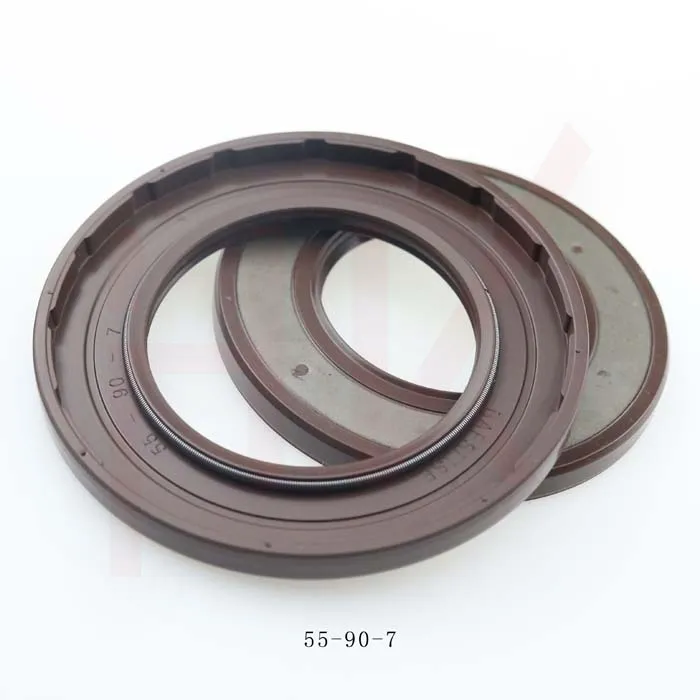Nov . 12, 2024 17:52 Back to list
hub dust seal
The Importance of Hub Dust Seals in Machinery Performance
In various industrial and automotive applications, the significance of components like hub dust seals cannot be overstated. These seals play a crucial role in ensuring the longevity and efficiency of machinery by preventing contaminants from entering critical areas. This article will explore the importance of hub dust seals, the materials used in their construction, their functioning principles, and the implications of neglecting them.
Understanding Hub Dust Seals
A hub dust seal is a protective barrier that is positioned where a rotating shaft meets a stationary casing, commonly found in wheel hubs, gearboxes, and other rotating machinery parts. The primary objective of these seals is to shield the internal components from external elements such as dirt, dust, moisture, and lubricants that may leak out. By preventing the ingress of foreign materials, hub dust seals help maintain the integrity of the lubricants, hence optimizing the performance of the machinery.
Construction and Materials
Hub dust seals typically consist of a metal casing, rubber or elastomeric lip, and sometimes additional components like springs to enhance performance. The choice of materials is vital for the durability and efficiency of the seals.
The metal casing provides structural strength, while the rubber lip offers flexibility and the ability to conform to varying surfaces. Common materials used in making hub dust seals include Nitrile Rubber (NBR), Fluoroelastomer (FKM), and Thermoplastic Elastomer (TPE). Each material has unique properties that can withstand different temperature ranges and environmental conditions, making it essential to select the right type of seal for specific applications.
How Hub Dust Seals Work
hub dust seal

Hub dust seals function through a straightforward but effective mechanism. The elastomeric lip forms a tight seal against the rotating shaft, creating a barrier that prevents contaminants from penetrating the hub assembly. The slight pressure generated from the lubricant inside the hub pushes the lip against the shaft, ensuring a secure fit.
It is important to maintain the correct fit and ensure that the seal is properly installed. Over time, seals can wear out due to friction, heat, and exposure to harsh environmental conditions. Regular inspection and timely replacement are crucial to ensure that they continue to perform effectively.
Implications of Neglecting Hub Dust Seals
Failing to maintain hub dust seals can have severe consequences for machinery performance. Contaminants entering the hub assembly can lead to accelerated wear of components such as bearings and gears, resulting in costly repairs and downtime. For automotive applications, compromised seals can lead to brake failure or reduced steering efficiency, posing significant safety risks.
Additionally, when lubricants leak due to damaged or improperly installed seals, it can lead to overheating, increased friction, and ultimately, complete machinery failure. Regular maintenance of hub dust seals can help prevent these issues, ensuring that the machinery operates smoothly and efficiently.
Conclusion
In conclusion, hub dust seals may appear to be small and simple components, but they are essential for the optimal functioning of various machinery. Their role in protecting critical internal parts from contaminants cannot be underestimated. With the right materials and proper maintenance, hub dust seals significantly contribute to the longevity and efficiency of machinery, reducing the risk of costly repairs and ensuring safe operation.
In both industrial and automotive sectors, attention to the condition of hub dust seals should form part of a comprehensive maintenance strategy. By investing time and resources into regular inspection and replacement, operators can enhance performance and reliability, ensuring that their machinery continues to operate at peak efficiency for years to come. The significance of these seemingly minor components in the grand scheme of machinery operation highlights the intricate balance of parts working together to achieve optimal performance.
-
TCN Oil Seal Metal Ring Reinforcement for Heavy Machinery
NewsJul.25,2025
-
Rotary Lip Seal Spring-Loaded Design for High-Speed Applications
NewsJul.25,2025
-
Hydraulic Cylinder Seals Polyurethane Material for High-Impact Jobs
NewsJul.25,2025
-
High Pressure Oil Seal Polyurethane Coating Wear Resistance
NewsJul.25,2025
-
Dust Proof Seal Double Lip Design for Construction Equipment
NewsJul.25,2025
-
Hub Seal Polyurethane Wear Resistance in Agricultural Vehicles
NewsJul.25,2025
-
The Trans-formative Journey of Wheel Hub Oil Seals
NewsJun.06,2025
Products categories
















